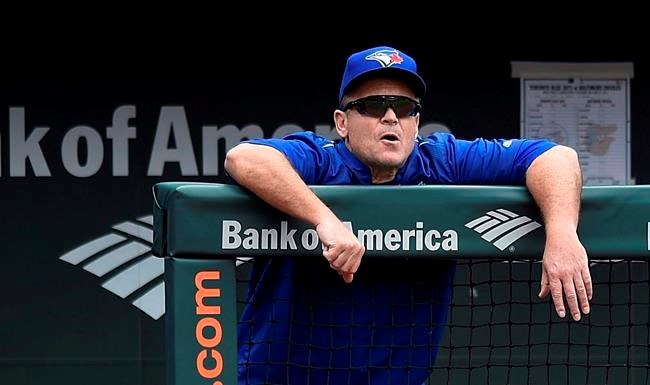John Gibbons could have been a Blue Jay more than two decades before he first joined the organization, if he had made a better first impression.
Toronto first eyed its current manager in 1980, when he was a still a 17-year-old catcher at MacArthur High School in San Antonio. Keen on Gibbons' potential, the Jays sent scout Al LaMacchia to see him at an individual tryout prior to that year's MLB draft.
But Gibbons, unaware of who LaMacchia was, left the scout unimpressed in that initial interaction.
"I was catching a pitcher in the bullpen and there's this old man just sitting there watching and I'm like, 'who is this guy,'" Gibbons said with a laugh in his Toronto office last week.
"The pitcher finishes throwing and the guy walks up to me and says: 'Hey son', and I say: 'yes sir?' He goes: 'You know how many balls you dropped?' I said: 'I wasn't counting.' He said: 'About five or six. That's too many.'"
The Blue Jays, who had the No. 2 overall pick that year, instead chose Garry Harris, a shortstop from San Diego who didn't make it past double-A.
Gibbons fell to the 24th spot, going to the New York Mets with their third pick of the first round. The Mets also had the No. 1 selection that year, snagging outfielder Darryl Strawberry before choosing another outfielder, Billy Beane at No. 23.
Neither Beane nor Strawberry signed with the Mets immediately, holding out for large bonuses. Beane eventually settled on US$125,000 while Strawberry received $210,000.
Gibbons, fearing New York would rescind its modest offer of $45,000, was too eager to wait. He signed three days after the draft, foregoing a scholarship to the University of Texas, when Mets scout Jim Hughes came to his house.
"Me and my dad, we didn't know what we were doing," Gibbons chuckled. "(Hughes) made the offer and we were sitting there talking and finally he said $45,000 was the best they could do and he left the house. So I tell my dad: 'I don't think they really want me, I better take that.' I called (Hughes) and I said: 'Give me $55,000 and I'll sign right now.' And he came right back over.
"Later I talked to Beane and Strawberry and their first offer was $45,000 and they both held out over a month. Then I talked to the guy picked behind me (in the second round) and they offered him $45,000 and he got $90,000. That's what happens when you're eager — eager and stupid."
Much has changed since the 1980 draft in terms of bonus money for players.
Last year's 24th pick, shortstop Hudson Sanchez, signed with San Diego for a cool $1 million while the No. 1 selection (outfielder Mickey Moniak) reached a $6.1 million deal with Philadelphia. Toronto's first pick in the 2016 draft, pitcher T.J. Zeuch at No. 21, signed for over $2 million.
The Blue Jays will pick twice (at 22 and 28) in the first round of this year's draft, which begins Monday and goes through Wednesday, and have a total of $8.23 million allotted to signing bonuses.
Gibbons spent part of his 1980 bonus on a Datsun 280ZX before reporting to Tennessee to play for the Appalachian League's Kingsport Mets.
He played a total of 11 years in the minors with the Mets, Dodgers, Rangers and Phillies and had two brief MLB stints for New York in 1984 (nine games) and 1986 (eight games).
Gibbons said it's always been hard to tell which players will succeed in the majors. Seven of the 26 first-round picks from his own draft never made it to the big leagues but three of them — Strawberry, Kelly Gruber, and Glenn Wilson — were all-stars.
Others like Terry Francona, Rick Renteria and Gibbons, who first joined Toronto as a bullpen catcher in 2002 before becoming the team's first base coach later that year, became better known in managing roles.
"That was a good draft," Gibbons said, listing off some of those first-round picks. "Some pretty good players there."
Melissa Couto, The Canadian Press

